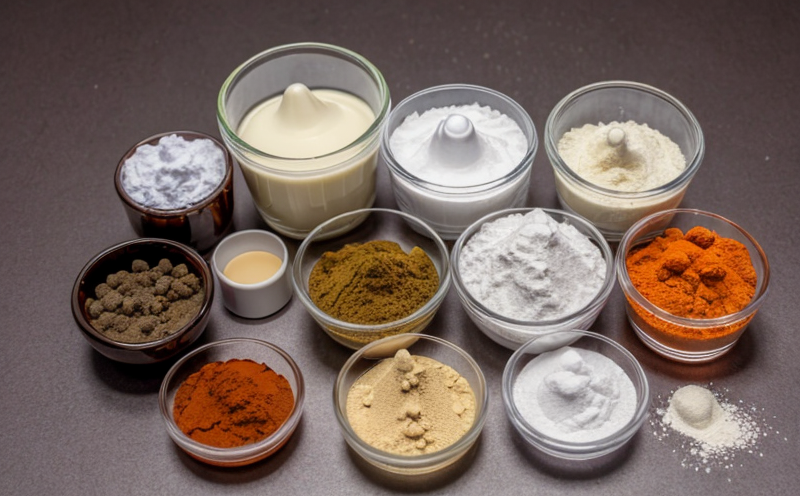PEG Glycerol Plasticizer Content Testing
The PEG (Polyethylene Glycol) glycerol plasticizer content test is a critical analytical process in pharmaceutical testing. This method ensures that the excipient and formulation ingredients used meet stringent quality standards, thereby ensuring product efficacy and safety.
PEG is widely used as an inert plasticizer in many pharmaceutical products due to its ability to improve flow properties of granules during compression processes. However, excessive PEG content can lead to undesirable effects such as increased friability or altered dissolution profiles. Therefore, accurate quantification of PEG glycerol plasticizers is essential for both quality control and development stages.
The testing procedure typically involves sample preparation where the excipient or formulation ingredient undergoes extraction with suitable solvents like ethanol or methanol. After separation techniques such as centrifugation, the supernatant containing dissolved PEG components is analyzed using High Performance Liquid Chromatography (HPLC). This technique allows for precise quantification of various molecular weights present in the sample.
Accurate determination of PEG glycerol plasticizer content not only ensures adherence to regulatory requirements but also facilitates optimization of formulations. Regulatory bodies like FDA, EMA, and WHO recommend this testing as part of their good manufacturing practices (GMP) guidelines. Compliance with these standards is crucial for manufacturers aiming to gain market access or maintain existing certifications.
In addition to meeting legal compliance, understanding PEG glycerol plasticizer content helps in predicting potential interactions between different excipients and active pharmaceutical ingredients (APIs). For instance, certain levels of PEG may enhance the stability of APIs by forming a protective layer around them. Conversely, high concentrations might interfere with drug release mechanisms causing variations in bioavailability.
Real-World Applications
The importance of this test extends beyond laboratory settings; it plays a pivotal role throughout various stages of pharmaceutical product lifecycle management from initial R&D to final production. During early stages, researchers use this information to explore optimal combinations of excipients that could improve drug performance without compromising safety.
- Quality Control: Ensures consistency across batches by monitoring PEG content levels.
- R&D Optimization: Guides formulation development through precise control over plasticizer usage.
- Supply Chain Management: Supports procurement decisions by verifying supplier adherence to agreed specifications.
Eurolab Advantages
Eurolab prides itself on delivering unparalleled accuracy and reliability in PEG glycerol plasticizer content testing. Our team comprises highly skilled chemists and technicians who employ state-of-the-art equipment to ensure consistent results.
- Expertise: Leveraging decades of experience, our professionals stay updated with the latest advancements in analytical methods.
- Affordability: Offering competitive pricing without compromising on quality or service.
- Prompt Delivery: Providing quick turnaround times to meet urgent deadlines.
Customer Impact and Satisfaction
Eurolab's commitment to excellence has earned us a reputation for providing top-notch testing services, leading to high levels of customer satisfaction. Our clients benefit from our robust quality assurance processes which help them maintain regulatory compliance while enhancing product performance.
- Enhanced Reputation: Ensures reliability and trustworthiness among stakeholders including patients, healthcare providers, and investors.
- Innovation Support: Facilitates continuous improvement in R&D projects by offering reliable data points for decision-making.
Environmental and Sustainability Contributions
Eurolab is committed to sustainable practices that minimize environmental impact while supporting broader sustainability goals. By adhering strictly to ISO standards, we contribute positively towards reducing waste generation and promoting energy efficiency.
- Waste Reduction: Minimizes chemical waste through efficient use of reagents and solvents during testing procedures.
- Eco-Friendly Practices: Utilizing modern technologies that reduce carbon footprint associated with laboratory operations.





